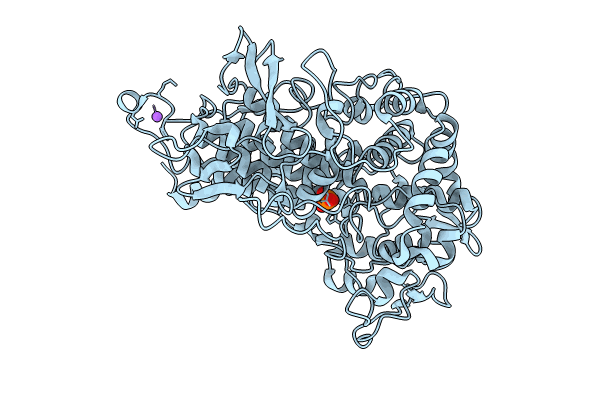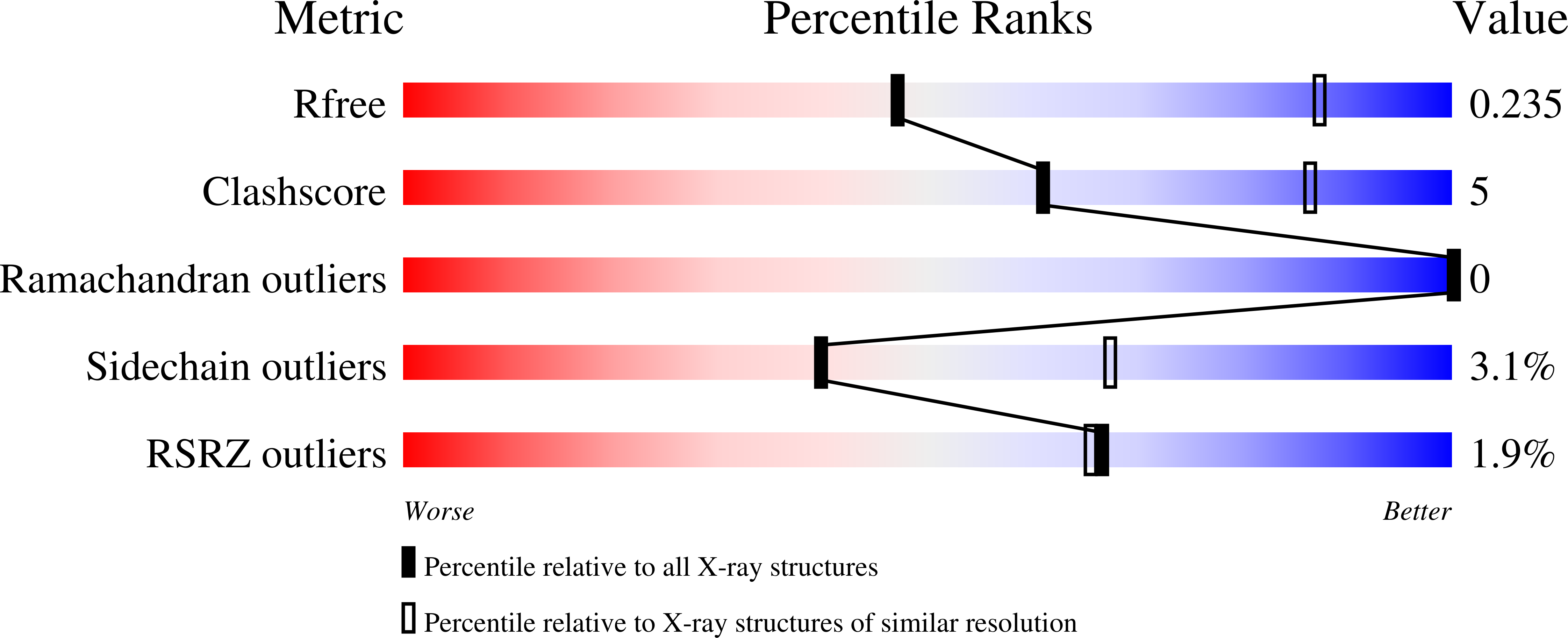
Deposition Date
2023-08-01
Release Date
2024-08-14
Last Version Date
2025-03-12
Entry Detail
PDB ID:
8Q21
Keywords:
Title:
Crystal structure of Vanadium-dependent haloperoxidase R425S mutant (A. marina)
Biological Source:
Source Organism:
Acaryochloris marina (Taxon ID: 155978)
Host Organism:
Method Details:
Experimental Method:
Resolution:
3.30 Å
R-Value Free:
0.23
R-Value Work:
0.21
R-Value Observed:
0.21
Space Group:
F 41 3 2


